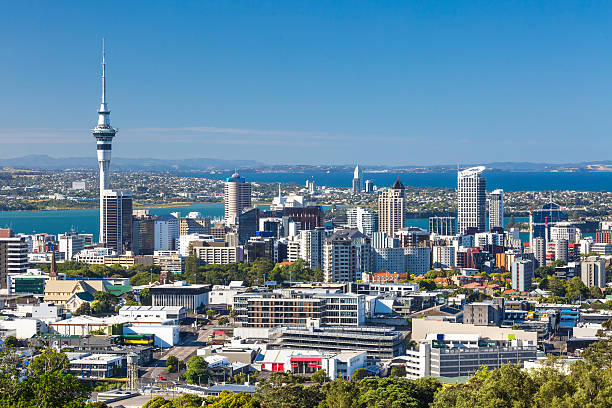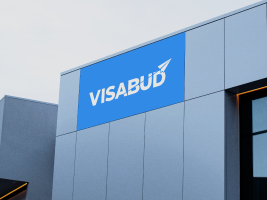Democratic Republic of the Congo Travel Guide: All you need to know to visit Democratic Republic of the Congo in 2025
Welcome to Democratic Republic of the Congo
Situated in the central region of Africa, the Democratic Republic of Congo is among the countries found in that area. It is bounded by the Central African Republic and South Sudan to the north, Uganda, Rwanda, Burundi, and Tanzania to the east, Zambia to the southeast, and Angola to the southwest. The French colonial powers colonized the country.
Geography
Congo covers approximately an area of about 2.345 million square kilometers and straddles the equator. It is the third largest nation in Africa after Sudan and Algeria and the 11th largest globally. The country’s major topographical features include a large river basin, a central valley, high plateaus, three mountain ranges, and a low coastal plain. Rwenzori Mountains is the highest peak in Congo and Uganda, with an elevation of 5,109 meters (16763 feet), and the third highest in Africa after Mount Kilimanjaro and Kenya. The country is also endowed with several lakes and rivers flowing within the region, famous as Lake Albert, Edward, Kivu, Tanganyika, and Mweru, with several rivers such as River Chiloango and Lukunga.
Climate
DRC Congo has a tropical climate with two distinct seasons, the dry season (18 to 27 degrees Celsius), also cold Congolese winter running from June to August, and the rainy season (22 to 33 degrees Celsius) running from September to May with the heaviest downpour being on May, monsoon rains. The southeastern trade winds and its strategic location near the equator are the main factors influencing the average climate and weather of the DRC Congo. Temperatures are high, an average of 24.6 degrees Celsius because of the equator, and the region also receives rainfall throughout the year, with the average rainfall being between 1600 to 2000 millimeters annually. The region is also known for a long time for its political instability, characterized by an economic crisis, fuel disputes, and even different rebelling groups.
Population
Due to its versed size, the country’s population is large, currently at 90,923,946 according to the latest United Nations data report. The country also has diverse ethnic groups and languages being represented. The country also has various ethnic groups, such as Kongo, Teke, Zande, Bantu, Tutsi, Luba, Bari, and others ethnic groups. The country, therefore, has various people from various ethnic backgrounds.
DRC Congo is also characterized mainly by a relatively younger population, with a median age of around 19.2 years. Centrally to this, the country also has a high infant mortality rate being at 31.987 per 1000 births due to tropical infectious diseases with a low life expectancy of approximately 64years.
Languages
Congo has various ethnic groups from different cultural contexts and various languages used in the country. The four national languages of DRC Congo are French, Kituba (Kikingo), Lingala, Swahili, and Tshiluba; French is the official and national language used widely in education and government. The country also has some other local languages used across various ethnic communities. The English language is also used in the country less frequently than the UN soldiers, and refugees mostly use it.
Religion
Christianity is the main religion in DRC Congo. Of the Christians, 48.1% are protestant, including evangelical Christians and the church of Jesus Christ on earth through the prophet Simon Kiambangu. 47.3% are roman catholic. There are approximately 60 protestant denominations.
Government
DRC Congo is usually a centralized constitutional republic. The country adopted its constitution in 2002, with the executive branch of the government governed by the president as the chief commander and the head of state. The president is eligible for two seven-year terms of service in the government. The president designates the council of ministers and is elected by the people based on popular votes garnered. The country also has a bicameral type of national assembly, with the National assembly being the lower house and the main political legislative body established in 2006 by the constitution.
The judiciary system in Congo also has the Supreme Court, Court of Appeal, and constitutional court. The president heads the higher council of magistrates and nominates supreme court judges. The judiciary is also free and independent from the government’s legislative and executive arms.
Economy
DRC Congo has a mixed economy of both agriculture and mining. DRC Congo is one of the wealthiest countries with minerals in Africa. Its economy relies heavily on mining minerals such as gold, copper, and even petroleum; therefore, it is an industrial extraction economy. The country also majorly exports agricultural products such as sugarcane and tobacco. Being one of the most resourced and wealthiest economies in minerals, the economy of DRC Congo has never significantly made such significant progress because of constant political instability and internal conflicts.
Cultures
Congo is a diverse country with diverse cultural ethics. The country enjoys rich cultures, such as the famous Rhumba and Lingala music infused with French, Arab, and African roots, well preserved ethnic and traditions. It also loves football as the most popular game winning the African Cup of Nations in 1968 and 1974.
Recent History
For a very long time, DRC Congo has been known for its political instability in various parts of the country due to its rich minerals such as gold and petroleum. Since 2021, a significant threat from the M23 terror group has been causing political instability and fights in the DRC Congo.
Related Articles

5 min read
New Zealand Introduces Key Changes to Post Study Work Visa : What You Should Know
According to the government, this change will provide students with greater flexibility in their academic choices while ensuring they remain eligible to work. For many students, studying abroad is a
Read More
5 min read
The Singapore visa processing time for Indian citizens
Singapore is a small island located in the Malay Peninsula in Southeast Asia. It is one of the most economically developed countries in the world. Singapore is a fantastic place
Read More
5 min read
How Much Does an Australia Trip Cost from India?
If you are planning a trip from India to Australia, you must follow some of the points. that are : Planning Budget Traveling date and time To which place you
Read MoreBefore entering the Republic of Congo, individuals of Indian nationality need a visa. Visas are available from the DRC Congo embassy or consulate located in India.
Choose the category of DRC Congo visa you need
Pay online.
Please send us your documents using the pick-up and drop-off services.
Upon approval, receive your visa.
The best time to apply for a DRC Congo visa online is 1 to 2 months before traveling.
Visa validity goes for a maximum of 90 days.
An airport visa Is available for Indian business people and investors who want a visa on arrival.
The Ministry of interior affairs may approve an extension of the DRC Congo tourist visa only once with the approval of the Tourism Department.
DRC Congo travel checklist
- Valid passport
- Visa
- Flight tickets
- Travel Insurance
- Supporting documents
- DRC Congo currency
- Travel itinerary.
